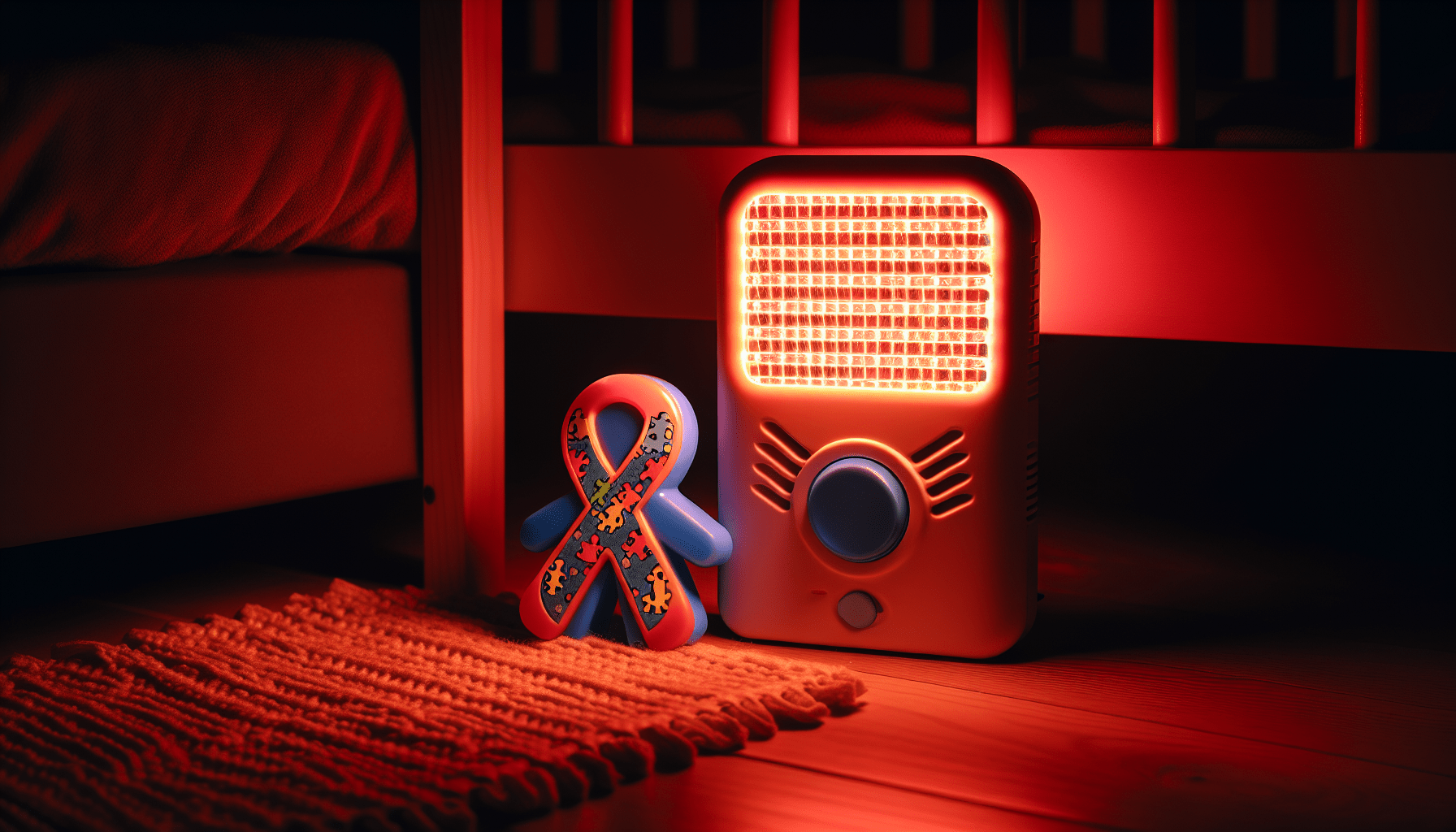Welcome to the fascinating world of red light therapy and its potential benefits for improving autism symptoms. Scientists and researchers have been exploring the use of red light therapy as a non-invasive and safe treatment option for individuals with autism. Studies have shown promising results, suggesting that red light therapy could help improve communication skills, reduce sensory challenges, and enhance overall well-being for those on the autism spectrum. So, if you or a loved one is looking for alternative therapies to support autism management, consider exploring the potential of red light therapy.
Can Red Light Therapy Improve Autism Symptoms?
Have you ever wondered if red light therapy could potentially benefit individuals with autism? This article will explore the potential benefits of red light therapy for improving autism symptoms and provide you with all the information you need to know.
What Is Autism?
Autism, or autism spectrum disorder (ASD), refers to a range of conditions characterized by challenges with social skills, repetitive behaviors, speech and nonverbal communication, as well as by unique strengths and differences.
Autism is a complex neurodevelopmental disorder that affects how a person interacts with others, communicates, and experiences the world around them.
Current Treatments for Autism
The current treatments for autism focus on therapies such as behavioral therapy, speech therapy, occupational therapy, and medications to manage symptoms such as anxiety or irritability.
While these treatments can be beneficial for some individuals with autism, there is ongoing research to explore alternative therapies that may complement or enhance traditional treatments.

What Is Red Light Therapy?
Red light therapy, also known as low-level laser therapy (LLLT) or photobiomodulation, involves exposing the skin to low levels of red or near-infrared light. This non-invasive therapy is thought to promote healing and reduce inflammation in the body.
Red light therapy is used for a variety of conditions, including promoting wound healing, reducing pain and inflammation, and improving skin conditions.
How Red Light Therapy Works
Red light therapy works by stimulating the mitochondria in our cells to produce more ATP, which is the energy currency of our cells. This increase in ATP production is thought to enhance cellular function and promote healing and repair.
The red or near-infrared light also has anti-inflammatory effects, which can help reduce inflammation in the body and promote overall well-being.

Potential Benefits of Red Light Therapy for Autism
Researchers are currently investigating the potential benefits of red light therapy for individuals with autism. While the research is still in its early stages, some preliminary studies have shown promising results.
Red light therapy may help improve symptoms associated with autism, such as social skills, communication, and repetitive behaviors. Additionally, red light therapy may help reduce inflammation in the brain, which could potentially benefit individuals with autism.
Studies on Red Light Therapy and Autism
A study published in 2018 in the Journal of Clinical Medicine found that red light therapy improved behavior and communication in children with autism. The researchers used red light therapy on a group of children with autism for 10 weeks and found significant improvements in their symptoms.
Another study published in 2020 in the Journal of Autism and Developmental Disorders found that red light therapy reduced brain inflammation in individuals with autism. The researchers used neuroimaging techniques to measure brain inflammation before and after red light therapy treatment.
How to Use Red Light Therapy for Autism
If you are considering red light therapy for yourself or a loved one with autism, it is essential to consult with a healthcare provider or therapist who is knowledgeable about red light therapy.
Red light therapy devices are available for home use, but it is crucial to follow the manufacturer’s instructions and safety guidelines when using these devices.
Potential Risks and Side Effects of Red Light Therapy
While red light therapy is generally considered safe, there are some potential risks and side effects to be aware of. These may include:
- Eye damage: It is important to protect your eyes when using red light therapy devices to prevent damage to the retina.
- Skin burns: Excessive exposure to red light therapy may cause skin burns, so it is essential to follow the recommended guidelines for treatment duration and intensity.
- Interference with medications: Red light therapy may interact with certain medications, so it is essential to consult with a healthcare provider before starting red light therapy.
Conclusion
In conclusion, red light therapy shows promise as a potential treatment for improving autism symptoms. While more research is needed to fully understand the benefits of red light therapy for individuals with autism, early studies suggest that it may have a beneficial impact on behavior, communication, and brain inflammation.
If you are considering red light therapy for yourself or a loved one with autism, it is essential to consult with a healthcare provider and therapist who can provide guidance on the best approach to incorporating red light therapy into your treatment plan.
